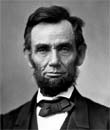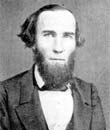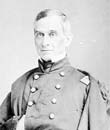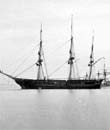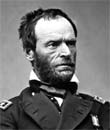
Day-by-Day Timeline of Events
January 2, 1861
North Carolinian forces take the Fayetteville arsenal as well as Fort Macon and the forts of Wilmington.
January 4, 1861
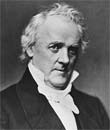
January 5, 1861
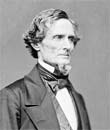
January 6, 1861
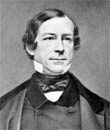
January 8, 1861
A U.S. Army garrison stationed at Fort Barrancas (Pensacola, Florida) turns back an attempted assault to take the fort.
January 9, 1861
The steamer "Star of the West", laden with supplies and en route to Fort Sumter in Charleston (South Carolina), is fired upon by land-based cannons.
January 9, 1861
The state of Mississippi moves to secede from the Union, strengthening the growing Confederacy in the south.
January 10, 1861
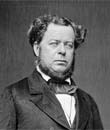
January 11, 1861
Alabama moves to secede from the Union, following Mississippi and Florida just days ago.
January 12, 1861
Star of the West, a steamer having delivered supplies to Fort Sumter in Charleston, South Carolina, returns to New York with her battle-damaged hull resulting from a Confederate attack.
January 19, 1861
The state of Georgia officially secedes from the Union, joining its southern sister states in the new Confederacy.
January 29, 1861
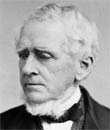
February 1, 1861
Texas declares it has seceded from the Union, joining a chorus of southern states in defiance of the north.
February 4, 1861
A provisional government arranged to head the affairs of the new south meet in Montgomery, Alabama.
February 4, 1861
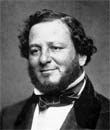
February 4, 1861
In an effort to settle the issue of slavery, representatives of some twenty-one states meet in Washington, D.C. to form the Washington Peace Conference. The conference runs until February 27th.
February 8, 1861
Confederate government leaders announce the name of "Confederate States of America" to mark their new union.
February 9, 1861
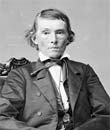
February 18, 1861
Confederate leaders in Montgomery inaugurate officers to head up various positions in the new government.
February 21, 1861
Stephen Mallory is appointed Secretary of the Navy for the Confederate States of America.
February 21, 1861
President-elect Abraham Lincoln makes a stop in Philadelphia, Pennsylvania. He is made aware of an assassination plot against his life. In response a special train journey is arranged for him to Washington, D.C.
February 22, 1861
Abraham Lincoln, the President-elect of the United States, arrives safely in Washington, D.C.
February 23, 1861
Texans go to the polls and overwhelmingly reaffirm their intent to secede from the Union.
February 23, 1861
Abraham Lincoln, President-elect of the United States, has his inaugural photograph taken at Matthew Brady's studio.
February 25, 1861
The Confederate government names Judah Benjamin, a former U.S. senator, as its first Attorney General.
March 2, 1861
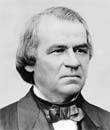
March 4, 1861
Abraham Lincoln is officially inaugurated as the next President of the United States, succeeding James Buchanan.
March 4, 1861

March 5, 1861
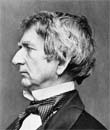
March 6, 1861
The Provisional Army of the Confederate States is established by the Confederate government.
March 21, 1861
In a speech given during a stop in Savannah, Georgia, Confederate Vice President Alexander H. Stephens reaffirms the southern stance on slavery.
April 6, 1861
President Lincoln notifies the government of South Carolina that general supplies will be sent to Fort Sumter at Charleston Harbor - he gives his assurances that any strengthening of the position will only be made if the Fort is in danger of attack.
April 11, 1861
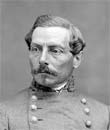
April 12, 1861
With the refusal by Union forces at Fort Sumter to surrender their post, Confederate forces begin their ranged bombardment of the island.
April 12, 1861
At 4:30AM, a gun from Fort Johnson fires a star shell that detonates above Fort Sumter. This is the signal for the surrounding gun batteries to begin shelling the Union-held fort.
April 12, 1861
At 7:00AM, the guns of Fort Sumter return fire against Confederate positions in Charleston Harbor.
April 15, 1861
President Lincoln calls for a special session of Congress to discuss the growing rebellion in the south.
April 15, 1861
President Lincoln pushes for 75,000 soldiers who will each serve three-month tenures.
April 16, 1861
With the stroke of a pen, President Lincoln abolishes the practice of slavery in Washington, D.C.
April 16, 1861
President Lincoln calls on all states in the Union to cease doing business with those southern states that have moved to secede.
April 16, 1861
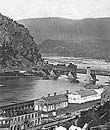
April 17, 1861
Confederate President Jefferson Davis calls on any and all privately-own vessels allied to the southern cause to openly attack Union merchants.
April 18, 1861
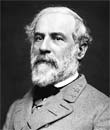
April 19, 1861
President Lincoln calls on all southern ports to be blockaded, the territories in question being the lower East Coast all the way to the Gulf of Mexico.
April 19, 1861
The New York 7th Regiment begins their march to Washington, D.C. to help bolster defenses there.
April 20, 1861
To avoid further clashes with troops, Baltimore formally asks President Lincoln to refrain from having military forces pass through the city.
April 20, 1861
Union forces destroy a section of the Norfolk Navy Yard in Virginia before abandoning it.
April 20, 1861
A resolution is passed in Union Square (New York) calling for citizens to band together and help save the nation from destruction.
April 20, 1861
Telegraphs are confiscated by the United States government to help identify those that would cause harm to the Union.
April 20, 1861
American citizens are arrested throughout Baltimore, Boston and New York without due process - brought about by warrants issued under the name of the United States Secretary of State.
April 21, 1861
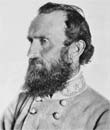
April 21, 1861
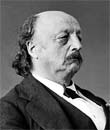
April 22, 1861
The United States government moves in to take over the now-vacated estate of Robert E. Lee, known as "Arlington House". The estate sat on the Potomac River.
April 22, 1861
Lieutenant Joseph Wheeler, an officer in the United States Army, resigns his position to join the ranks of the south.
April 23, 1861

April 24, 1861
Virginia formally aligns its state military capabilities with that of the Confederate Army.
April 24, 1861
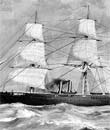
April 27, 1861
President Lincoln adds east coast ports in Virginia and North Carolina to the existing naval blockade action of the South.
April 27, 1861
Colonel Thomas Jackson arranges for more infantry forces from the Shenandoah Valley area (Virginia).
April 29, 1861
Confederate President Jefferson Davis calls a special session of congress to address recent developments - including the capture of Fort Sumter by South Carolinian forces.
April 29, 1861
The Confederate Congress convenes in Montgomery (Alabama) to tackle several issues. The group will gather until May 21st.
May 3, 1861
President Lincoln asks Congress for additional troops for three-year terms - hoping to bolster the ranks of the Army and Navy services. Some 42,000 volunteer forces are required.
May 7, 1861
The state of Tennessee formally aligns its military capabilities with that of the Confederacy.
May 9, 1861
Military assets of Texas are officially handed over to the Texas Rangers by U.S. General David Twiggs.
May 10, 1861
State authorities of Maryland pass a resolution decrying the war against the south. It decides to take a neutral stance in the growing conflict.
May 10, 1861
Union elements take militia forces at Camp Jackson outside of St. Louis, Missouri. The action causes riots to break out.
May 11, 1861
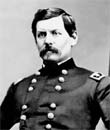
May 13, 1861
Britain declares herself neutral in the American conflict and fails to officially recognize the Confederate States of America.
May 14, 1861
Both Fort McHenry and Baltimore, Maryland are occupied by troops under the direction of General Benjamin Butler.
May 16, 1861
In an effort to strengthen its forces, the government of the Confederacy offers $10 enlistment bonuses.
May 21, 1861
Richmond, Virginia becomes the official national capital of the Confederacy of the United States.
May 24, 1861
Union forces cross the Ohio River into Virginia. Part of their mission is to secure forces loyal to the north found in the eastern part of the state.
June 1, 1861
The Confederate cause records its first casualty of war - Captain John Q. Marr - who died at the Fairfax Court House in Virginia.
June 1, 1861
In a proclamation to Virginians, General Beauregard gives a speech hoping to inspire the masses against actions of the north. He skillfully wields words like "tyrant", "murdering" and "outrage".
June 2, 1861
With General Beauregard now in command, the "Potomac Department" becomes the "Army of the Potomac".
June 2, 1861
CSS Savannah manages to beat the Union blockade of Charleston Harbor and escape to open water.
June 3, 1861
En route from Cuba and laden with a cargo hold of sugar, USS Joseph is intercepted and captured by CSS Savannah.
June 3, 1861
USS Perry manages to capture CSS Savannah and her crew intact. The prize is relocated to New York waters.
June 3, 1861
In the war's first contact battle between the two sides, Union forces claim the victory over Confederate elements at Philippi in West Virginia. The retreat of the Confederates, under General Robert Garnett, is so fast the engagement is known as the "Philippi Races".
June 4, 1861
Suffering defeat in the first true land battle of the war, Confederate forces clear out of Philippi, West Virginia.
June 5, 1861
In trying to muster greater hatred of the north, General Beauregard claims to Virginians that the north stands as a tyrant and has invaded their territory.
June 8, 1861
The Kentucky government keeps its military forces neutral in the ongoing - and growing - conflict between the north and south.
June 9, 1861
Mary Ann Bickerdyke begins her tenure as a wartime nurse for the north. Her contributions would go on to include establishment of 300 field hospitals and post-war support of veterans.
June 10, 1861
In the war's first complete pitched battle, the Confederates claim the victory over the Union at Big Bethel, Virginia.
June 10, 1861
Captain Judson Kilpatrick becomes the first Union officer wounded in the conflict, this after Union forces are repulsed at Big Bethel, Virginia.
June 11, 1861
Union loyalists in Western Virginia arrange their own local government. The work lasts through June 19th.
June 13, 1861
In order to improve conditions for injured and recovering troops, the United States Sanitary Commission is established in the north.
June 14, 1861
Acting governor of Virginia, John Letcher, calls on West Virginians to join the Confederate cause.
June 15, 1861
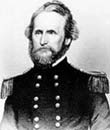
June 17, 1861
Confederate forces claim the victory in a skirmish against Union forces at Vienna, Virginia.
June 17, 1861
Captain Lyon leads his victorious Union forces against opposing militia at Boonville, Missouri in what becomes the Battle of Boonville. Losses are light for both sides and helps the Union maintain control of the Missouri River.
June 17, 1861
Thomas Jackson, a Colonel in the Confederate Army, is now promoted to Brigadier General.
June 17, 1861
Ulysses S. Grant of the Union Army achieves the rank of Colonel and named to the 21st Illinois Volunteer Infantry Regiment.
June 27, 1861
Union numbers defending the Union capital of Washington, D.C. now number close to 40,000 men.
July 1, 1861
At this point in the war, the United States Navy claims a fleet of over 80 warships and some 13,000 personnel.
July 2, 1861
President Lincoln suspends "writ of habeas corpus" in unique circumstances - the writ allowing a person the right to report an unlawful detention or imprisonment before a court.
July 4, 1861
President Lincoln, in a special session of Congress, asks for 500,000 men for the Union war effort. Current Union strength numbers 260,000 men with 165,000 of these being volunteers.
July 11, 1861
Union forces are victorious over Condeferate elements at Rich Mountain in West Virginia.
July 13, 1861
In Carrick's Ford (West Virginia), Confederate General Robert Garnett becomes the first officer-level casualty of the war.
July 16, 1861
Forces under the command of Union General Irvin McDowell are on the march from Washington, D.C. towards Manassas, Virginia.
July 19, 1861
Robert Toombs, the acting Secretary of State for the Confederacy, resigns his post to lead forces in Georgia as a brigadier general.
July 19, 1861
Robert Hunter succeeds Robert Toombs in the post of Secretary of State for the Confederacy.
July 20, 1861
The Confederate Congress meets once more, this time in the new capital of Richmond, Virginia. The group will convene until August 31st.
July 20, 1861
Union commander Irvin McDowell moves his 10,000 men from Centreville in two forces moving west and south westward. His intention is to flank the left side of the Confederate army.
July 21, 1861
At 8:30AM, Confederate forces at Stone Bridge are made aware of the Union presence at Sudley Road. Confederate General N.G. Evans moves his units to cover any Union retreat.
July 21, 1861
Finding themselves outnumbered, General Evans and his force retreats to Henry House Hill under the Federal pressure.
July 21, 1861
The front lines repeatedly change hands in the battle as both sides make - and lose - progress.
July 21, 1861
At 4:00PM the Confederates manage to force Union parties into retreat back towards Centreville.
July 22, 1861
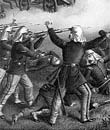
July 22, 1861
General George McClellan is handed control of the Division of the Potomac near Washington, D.C. by President Lincoln.
July 22, 1861
The United States Congress pushes through a resolution that declares the raging war to be about the preservation of the Union and not the ending of slavery.
July 22, 1861
After heavy losses incurred by both sides, the Battle of Bull Run is over. Federal forces retreat hastily back towards the safety of Washington, D.C.
July 27, 1861
Having assumed his new post near Washington, D.C., Union General George McClellan arranges the Army of the Potomac.
July 27, 1861
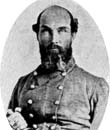
July 30, 1861
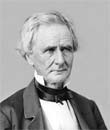
August 2, 1861
General George McClellan forms an agreement with reporters and photographers offering military telegraph services in exchange for limited publishing of Union details.
August 3, 1861
For the first time in warfare a reconnaissance balloon is used by Union forces to assess Confederate positions. The balloon is launched from USS Fanny at Hampton Roads to observe the enemy at Sewell's Point, Virginia.
August 3, 1861
William T. Sherman, then a colonel in the Union ranks, is promoted to Brigadier General.
August 5, 1861
The federal government issues the first-ever income tax to help finance the Union war effort.
August 6, 1861
The Second Confiscation Act is passed by the United States Congress. Details include forfeiting of slaves should one be caught aiding the Confederate war effort.
August 6, 1861
Having completed much-needed work, the United States Congress ends its special session.
August 7, 1861
Colonel Ulysses S. Grant is named Brigadier General in command of volunteer forces at Cairo, Illinois.
August 7, 1861
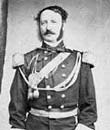
August 10, 1861

August 12, 1861
The Confederates announce an alliance with Indian tribes located within southern territories.
August 21, 1861
Cherokee Indians meet at Tahlegue and announce their alliance with the Confederate States of America. Their numbers total 4,000.
August 23, 1861

August 30, 1861
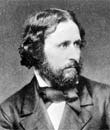
August 31, 1861
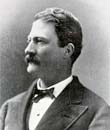
September 2, 1861
The emancipation of Missouri slaves by Union General John C. Fremont is put down by President Lincoln. He is then reassigned.
September 3, 1861
Confederate forces move into Western Kentucky and take Columbus along the all-important Mississippi River.
September 5, 1861
In an effort to elevate care for the Union wounded in the Western Theater, the Western Sanitary Commission is established in St. Louis, Missouri.
September 10, 1861
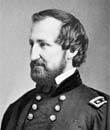
September 11, 1861
The state government of Kentucky calls for the removal of Confederate troops from its soil. The demand falls on deaf ears.
September 11, 1861
Confederate General Robert E. Lee attempts to take Union positions at Cheat Mountain in West Virginia. This marks Lee's first major foray in the war.
September 13, 1861
President Lincoln turns down a request by Chicago-area group to issue an emancipation proclamation. The president is convinced the action would sway border states to the Confederate cause.
September 13, 1861
Forces from the frigate USS Colorado burn an enemy ship during a raid on Pensacola, Florida. The group is led by Lieutenant J.H. Russel.
September 17, 1861
Ships of the United States Navy move in to secure Ship Island off the coast of Mississippi.
October 1, 1861
Confederate generals request 20,000 additional troops to take Maryland. Their request is denied by President Jefferson Davis.
October 2, 1861
To avoid arrest as a traitor, United States Senator John C. Breckinridge escapes Kentucky to join the Confederate cause.
October 4, 1861
United States Navy authorities put into place plans for its first ironclad warship - to become the famous USS Monitor.
October 7, 1861
"Stonewall Jackson", currently a Brigadier General serving with the Confederate Army, is handed the promotion to Major General.
October 9, 1861
Union troops manage to push back a Confederate attack targeting supplies on Santa Rosa Island in Pensacola Harbor, Florida.
October 17, 1861
To this point, notes issued by the Confederate Treasury have raised $100 million in support of the war.
October 21, 1861
Confederate forces successfully intercept a traveling Union force at Ball's Bluff, Leesburg, Virginia.
October 21, 1861
Colonel Joseph Plummer leads a Union force to victory over the enemy at Frederickstown in Missouri.
October 21, 1861
U.S. Army Colonel Edward Baker, a longtime and close friend of President Lincoln, is killed at Ball's Bluff, Virginia. He becomes the only sitting senator to be killed in action during the war.
October 22, 1861
The Department of Northern Virginia is arranged with Confederate General Joseph Johnson to be its leader.
October 24, 1861
Tennessean William Brownlow releases the final edition of the newspaper "Knoxville Whig" which has stood in support of anti-secession.
November 1, 1861
General McClellan is named General-in-Chief of all United States military forces by President Abraham Lincoln.
November 7, 1861
The Battle of Belmont is fought on Missouri soil. It marks the first major engagement for Union General Ulysses S. Grant. A force of about 5,000 Confederates square off against 3,114 Union in Mississippi County, Missouri. It is a Confederate victory but gives Grant much-needed experience in field command.
November 7, 1861
Confederate forces, including generals Leonidas Poke and Gideon Pillow, are victorious against a Union force under the command of General Grant at Belmont, Missouri.
November 8, 1861
USS San Jacinto captures the British mail steamer "Trent" en route from Havana to Europe - aboard are a pair of Confederate commissioners, James Mason and John Slidell.
November 11, 1861
The Union ship G.W. Parke Curtis releases an observation balloon to spy on Confederate positions off the Potomac River.
November 12, 1861
A Scottish-built merchant ship, the "Fingal", acquired in England by Confederate agents, successfully runs the Union blockade at Savannah to deliver much-needed supplies.
November 18, 1861
At Russellville, Kentucky, some authorities gather to vote for independence. George Johnson is named its new governor.
November 18, 1861
Author and poet Julia Ward Howe witnesses a review of Union troops outside of Washington, D.C. inspiring her to produce a new work.
November 19, 1861
To better meet the need for resupply and reinforcements, Confederate President Jefferson Davis implores the Congress to fund the construction of an East-West railway system.
November 19, 1861
Julia Ward Howe pens "The Battle Hymn of the Republic". The poem is written to the song "John Brown's Body".
November 23, 1861
Union defenders at Fort Pickens on Santa Rosa Island in Pensacola, Florida push back a rebel force attempting to overtake their positions.
November 25, 1861
Judah Benjamin, the Confederate Secretary of War, calls on all East Tenessee traitors to be executed where they stand.
November 26, 1861
Dranesvill, Virginia sees a Union victory as cavalry forces from both sides go head-to-head in one of the war's smaller battles - the Battle of Dranesville.
December 2, 1861
In the next meeting of the United States Congress, President Lincoln calls for a new railroad to be constructed to help in the Union war effort.
December 10, 1861
Union General Albin Shoepf's forces are run out of Somerset (Kentucky) by a Confederate force led by General Felix Zollicoffer,
December 20, 1861
Near Dranesville, Virginia, Union forces of the Army of the Potomac (led by General Edward Ord) are victorious over General Jeb Stuart and his Confederate elements.
December 20, 1861
Viewing Lincoln as too much a pacifist, the "Radical Republicans" of the United States Congress arrange the Joint Committee on the Conduct of the War.
December 21, 1861
The Navy Medal of Honor is signed into law by President Lincoln (Public Resolution 82).
December 26, 1861
To avoid war with Britain, Confederate-aligned commissioners captured two months earlier on the British ship "Trent" are released.


